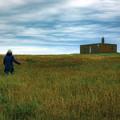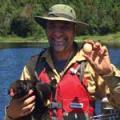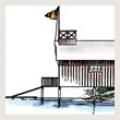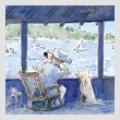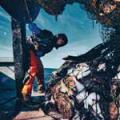Awanadjo Almanack—Issue 154
Welcome Downeast: The Towns, the Bays, the Mountains
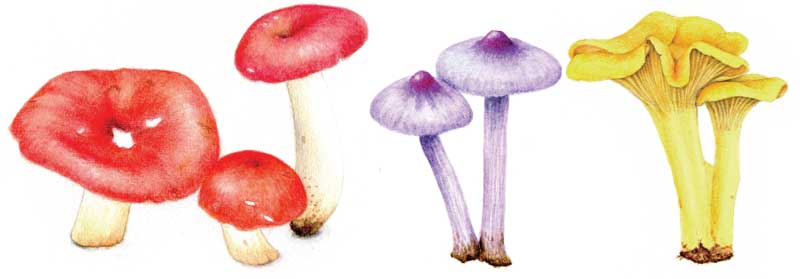
“On such October days as this, we look about us as though in some new and magic land. The mystical draws close behind the luminous veil. We see the things about us and sense larger meanings just beyond our grasp.”
—Edwin Way Teale
Dear Friends:
Summer turns to fall as silently as a tumbling leaf and as slowly as the new moon grows to full. First the heat eases and the sun starts to sleep later and retire earlier. Towering summer clouds melt, soften, and spread into overcast. Aging leaves turn leathery and opaque and rusty around the edges. Mushrooms of diverse shapes and colors spring up like magic, and caterpillars that look like something by Dr. Seuss parade along the fence rails and the wood pile. Purple and white asters stand and sway in the fields, while in the woods, seed cones sticky with resin drop from spruce and fir to waiting jays and squirrels. Bumblebees and butterflies hasten on their rounds to drink the last nectars of the year before the flowery fountains cease to flow.
The aromas of afternoon go from perfume to spice. The frosts come like strokes, slowing the darting insects and daubing the leaves with umber and vermilion until their very brilliance brings them down. Grasses and wildflowers turn brown and rattle in the north wind, and all that was warm and wet turns dry and cold as rocky hills, bouldered fields and stony shores prepare for winter’s sleep.
Field and forest report
Making a trail through second-growth coastal woods, untouched for a century or more, as your commentator has been doing recently, can be an enchanting experience. Even here in downeast Maine we spend much more time looking at our boreal forests from the outside than from within. Once within, we become part of the living woodland. Sunlight is bent and tinted green by the high canopy of spruce, fir, and birch. The sharp calls of a pileated woodpecker or yellow-shafted flicker are amplified by the silence to echo among the towering trunks. One nudge with a boot toe turns a fallen log into soft peat, releasing the aroma of soil being born.
Creatures rarely seen elsewhere make startling appearances. Here a large, glossy black, white-spotted Sawyer beetle lands on a stump, resting from its labors of laying eggs on the bark of dead or dying spruce, fir, or pine—where its larvae burrow into the wood and can be heard “scritch-scritching” under the bark. Over there a squirrel scolds the intruder from a hidden branch, as red squirrels will often do. But when it appears, it is not red at all, but nearly black, giving an ominous air to the day.
All around we see trees in all stages of life and death: tiny seedlings looking so frail that any day they might fail, ramrod straight saplings waiting for some sky to open up so they can reach the light, majestic patriarchs and matriarchs overarching all, and far below softly rotting dead trunks giving themselves up to make soil to nurture new sprouts sprung from their own seeds. It is hauntingly beautiful in these woods because they are left to themselves, undisturbed and unmolested, and thus they make a world sufficient in every way for all the creatures who live there.
Natural events
They say that if we can get past the full harvest moon without a frost, it will be a long autumn. Even if there is a freeze, though, there are lots of hardy flowers abloom now that laugh at frost and keep on keeping on. There are the fall asters of various colors and sizes with their petals of white, pink, and purple radiating around a sunny center. There is lovely toad flax Linaria vulgaris—although the name isn’t all that lovely—its orange and yellow blossoms also known as “butter and eggs.” They look like tiny snapdragons and do well in a vase. Sit and watch a patch of yellow hawkweed, close cousin to daisies and dandelions, and see how they bow their heads as a bee lands, and then rise again. Blanketing the fields with gold are the numerous types of goldenrods Solidago, of which there are more than 100 varieties. These, too, offer ample supplies of protein for foraging pollinators to strengthen the hive for the coming cold.
Natural events, October
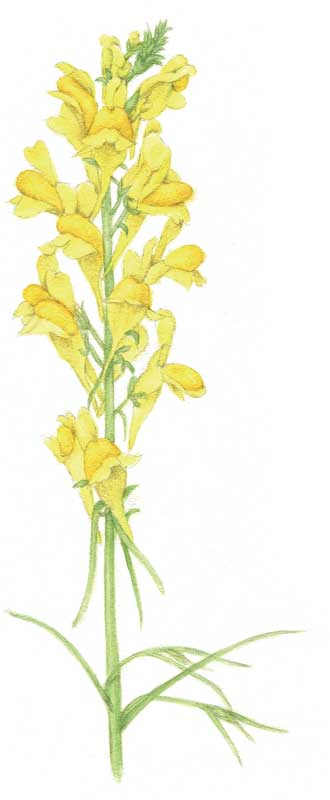 Illustrations by Candice Hutchison (2)
In northern lands autumn is a time of “hardening off” and toughening up for the winter. Scandinavians do it with the sauna, while native people do it with the sweat lodge where hardy souls heat up as much as they can stand and then dash out naked for an invigorating jump in a cold lake or a cold roll in the snow. “Thickening the blood” is what they call it.
Illustrations by Candice Hutchison (2)
In northern lands autumn is a time of “hardening off” and toughening up for the winter. Scandinavians do it with the sauna, while native people do it with the sweat lodge where hardy souls heat up as much as they can stand and then dash out naked for an invigorating jump in a cold lake or a cold roll in the snow. “Thickening the blood” is what they call it.
We humans are not alone in toughening up for the winter. Pines and cedars lose last year’s needles, covering the ground with a sweet-smelling carpet of cinnamon and gold—and this year’s needles cling more tightly, turning tough and leathery for protection against wintry winds. Hackmatacks lose their soft silky needles altogether and stand bare and stark against the cold. White-tailed deer put on a thick gray-brown winter coat over their reddish summer coat, and other mammals do the same. Even your old dog, who probably has a comfortable warm place by the fire to spend the cold months, will shed his thin coat and put on a thick wooly one that he doesn’t need because that is what his clan has done ever since Old Man Coyote was a pup.
And speaking of wooly, let’s not forget the renowned “wooly-bear” caterpillar, larva of the Isabella tiger moth, who lopes along in her brown and black fleece on many a frosty morning in her quest to find a snug place to bed down for the winter. Black bear, Muwin in Passamaquoddy, is now feeding furiously on nuts and berries to add a layer of fat to her thick coat before she too beds down for a long winter’s nap in a hollow tree, or a pile of brush, or under a blow-down. Now that is roughing it.
Field and forest report
Maple, elm, birch, and ash trees have lost most of their leaves. The oaks and the apples still hold on. It’s commonly thought that pine trees and other conifers don’t lose their needles. A walk in a pine grove these days will quickly show last year’s cinnamon brown needles falling on the ground all around, while this year’s needles hang tight on the branches. Watch for the witch hazel coming into bloom in the far woods with its stringy yellow blossoms emerging from bare branches and last year’s seed pods exploding and shooting seeds far and wide.
Wild speculation
The change of seasons here in Maine can be dramatic, especially as autumn makes its entrance with bright colors of orange, red, and gold. Fall comes every year, but there are also much longer seasons, ages, epochs, and eons that change the face of the earth more slowly. The ancient Greeks talked about the Golden Age long past when all was at peace. Archaeologists tell us about the Stone Age, the Bronze Age, the Iron Age, the Industrial Age, and the Information Age, each named for the tools used by humans in that era. Climatologists tell us about Ice Ages that abide over thousands of years.
These ages all last far longer than a human lifetime, so their coming and going may be much harder to see, though we can sometimes sense within us these great changes ever so slowly sweeping over the face of the earth, and feel a sense of foreboding. Yet, such fears may be quickly overcome by a brisk walk on an electric autumn day when maple leaves are glowing like stained glass windows, geese are fleeing southward in long, honking, wavering V’s, crickets are fiddling away in the grass, squirrels are hustling up, down, and sideways, storing nuts and seeds for all, and the air pouring down from Canada is fresh and clean. These are changes that can stir the soul, fire up the heart, and give us courage for tomorrow.
Seedpods to carry around with you
From Hal Borland: “Summer ends and autumn comes, and he who would have it otherwise would have high tide always and a full moon every night.”
And from Elizabeth Lawrence: “Even if something is left undone, everyone must take time to sit still and watch the leaves turn.”
That’s the Almanack for this time. But don’t take it from us—we’re no experts. Go out and see for yourself.
Yr. mst. humble & obd’nt servant,
Rob McCall
Illustrations by Candice Hutchison
Rob McCall lives way downeast on Moose Island. This almanack is excerpted from his weekly radio show, which can be heard on WERU FM (89.9 in Blue Hill, 99.9 in Bangor) and streamed live via www.weru.org. Reach Rob via email at awanadjoalmanack@gmail.com.
Related Articles
Share this article:
2023 Maine Boat & Home Show

Join Us for the Maine Boat & Home Show!
Art, Artisans, Food, Fun & Boats, Boats, Boats
August 11 - 13, 2023 | On the waterfront, Rockland, Maine
Click here to pre-order your tickets.
Show is produced by Maine Boats, Homes & Harbors magazine.







